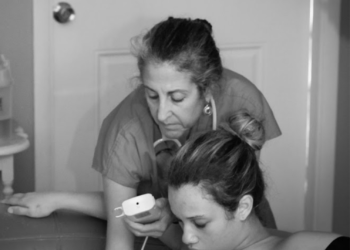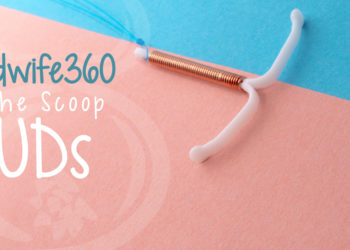During the transition from pregnancy to postpartum, it is crucial to comprehend the alterations your body will experience and learn how to care for yourself throughout this period of recuperation. In this comprehensive guide, we will discuss everything you need to know about postpartum care, from the recovery process to managing common symptoms and promoting overall well-being. So let’s dive in!
Understanding the Postpartum Recovery Period
Regardless of the method of delivery, healthcare professionals consider the first six weeks after giving birth as a crucial period for recovery. Your body has undergone significant changes during pregnancy and childbirth, and it needs time to heal and readjust. It’s important to note that every woman’s postpartum recovery is unique, and the duration may vary. However, there are some common symptoms and experiences that many new moms may encounter.
During the first week postpartum, you may experience symptoms such as sore nipples, backaches, and perineal pain. These discomforts are normal and typically subside within a week. However, some symptoms, like leaky breasts, may persist until your baby is a little older. If you had a vaginal birth, you may also experience soreness and perineal pain.
Recovery time for vaginal birth can range from three weeks for an uncomplicated delivery to six weeks or more for perineal tears or episiotomy. Your medical provider may recommend sitting on a pillow or padded ring and using ice packs or warm sitz baths to alleviate discomfort.
If you delivered by C-section, your recovery timeline may be longer. Expect to spend the first three to four days postpartum in the hospital for recovery. It may take four to six weeks or more to feel back to normal.
Walking after a C-section can help speed up your recovery, but consult with your healthcare provider for specific recommendations.
Managing Postpartum Bleeding
Postpartum bleeding, also known as lochia, is a normal part of the healing process. It typically lasts for up to six weeks after giving birth. The bleeding may be heavy during the first three to 10 days and gradually taper off, changing in color from red to pink, brown, and eventually yellowish-white. During this time, it is essential to use pads as we do not recommend tampons.
While postpartum bleeding is usually nothing to be concerned about, there are instances where you should seek medical attention. If you pass large clots or experience bleeding through more than one pad every hour, contact your medical provider immediately to rule out postpartum hemorrhage, a rare but serious condition that can occur within the first day after delivery.
Speeding Up the Postpartum Healing Process
To aid in your postpartum recovery, here are some tips to help you heal and feel better:
Help Your Perineum Heal
- Apply ice to your perineum every couple of hours within the first 24 hours after birth.
- Before and after urinating, spray warm water over the area to prevent irritation.
- Take warm sitz baths for 20 minutes multiple times a day to alleviate pain.
- Avoid prolonged periods of standing or sitting and sleep on your side for added comfort.
Care for Your C-Section Scar
- Gently clean your C-section incision with soap and water once a day.
- Consult with your doctor on whether to cover the wound or leave it uncovered.
- Avoid carrying heavy objects and refrain from vigorous exercise until cleared by your doctor.
Easing Aches and Pains
- Take acetaminophen or ibuprofen for pain relief, following your healthcare provider’s recommendations.
- Use hot showers, heating pads, or enjoy a massage to alleviate overall achiness.
Promoting Healthy Bowel Movements
- Eat fiber-rich foods, such as whole grains, fruits, and leafy green vegetables, to prevent constipation.
- Drink plenty of water and discuss the use of gentle stool softeners with your doctor.
- Avoid straining during bowel movements to prevent complications like hemorrhoids and delayed healing.
Strengthening Your Pelvic Floor
- Practice postpartum Kegel exercises to improve urinary incontinence and restore pelvic muscle tone.
- Aim for three sets of 20 repetitions daily, but don’t push yourself if it causes discomfort.
- Consult with a physical therapist if needed for guidance on proper technique.
Breast Care
- Use warm compresses or ice packs and gentle massage to alleviate soreness.
- Wear comfortable nursing bras and allow your breasts to air out after nursing sessions.
- Apply lanolin cream to prevent or treat cracked nipples.
Regular Doctor’s Appointments
- Schedule regular check-ups with your doctor to ensure proper healing and address any concerns.
- Discuss the removal of staples or sutures if you had a C-section.
- Seek medical attention if you experience symptoms like fever, pain, or tenderness around incisions.
Maintain a Healthy Diet
- Eat five small meals throughout the day, incorporating complex carbs, protein, and fiber-rich foods.
- Stay hydrated by drinking at least 64 ounces (about eight glasses) of water daily.
- Limit alcohol and caffeine intake, as they can affect mood and disrupt sleep patterns.
Stay Active
- Begin with gentle walks around your house and gradually increase your activity level.
- Walking promotes circulation, aids in digestion, and boosts mood.
- Consult with your doctor about when and how to resume exercise postpartum.
Essential Items for Postpartum Recovery
To ensure a smooth postpartum recovery, it’s helpful to prepare ahead of time. Here are some essential items to have on hand:
- Acetaminophen and ibuprofen for pain relief
- Maxi pads for postpartum bleeding
- Ice packs or frozen padsicles for perineal pain
- Witch hazel pads to soothe vaginal discomfort and hemorrhoids
- Sitz bath or regular bathtub for pain relief
- Peri or squirt bottle for cleansing the perineal area
- Comfortable cotton underpants for optimal comfort
- Nursing bras for easy breastfeeding access
- Lanolin cream for nipple care
- Nursing pads to manage leakage
- Lidocaine spray for postpartum hemorrhoid pain
- Stool softener for gentle bowel movements
- Postpartum recovery belt for abdominal support
- Heating pad for pain relief
Recognizing Postpartum Depression
While joy fills the postpartum period, it can also present significant emotional challenges. Many new moms experience the baby blues, characterized by mood swings, fatigue, and mild depression. However, if you have symptoms of postpartum depression, such as persistent sadness, hopelessness, anxiety, or feelings of isolation, it’s crucial to seek help from your healthcare provider.
Postpartum depression affects up to an estimated 1 in 7 new moms and is not your fault. Reach out to organizations like Postpartum Support International for support and connect with others who may be experiencing similar feelings. Regular check-ins with your doctor can also help monitor your emotional well-being and provide guidance for managing postpartum mental health.
Embracing the Postpartum Journey
Remember to be patient and kind to yourself during the postpartum period. It’s a time of adjustment and healing, both physically and emotionally. While it may feel overwhelming at times, know that you are not alone.
Reach out to your support system, whether it’s friends, family, or healthcare professionals, for guidance and reassurance. Cherish this special stage with your newborn, as it passes by quickly. Take care of yourself, and enjoy the beautiful journey of motherhood!


















